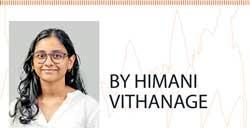Reply To:
Name - Reply Comment
Last Updated : 2024-05-08 22:42:00
 The COVID-19 pandemic and ongoing economic crisis have resulted in over two years of learning loss in Sri Lanka, with its effects being more on vulnerable children, due to the gaps in inclusiveness in education.
The COVID-19 pandemic and ongoing economic crisis have resulted in over two years of learning loss in Sri Lanka, with its effects being more on vulnerable children, due to the gaps in inclusiveness in education.
Access to inclusive and equitable quality education is a fundamental human right. It is crucial for achieving developmental goals like ending poverty and helping people move up in society.
The United Nations marks this year’s International Day of Education under the theme ‘learning for lasting peace’ highlighting the important role played by inclusive and equitable education in the sustenance of peace
and development.
 However, the path to achieving equitable access to quality education by 2030 seems challenging, with only one in six countries projected to reach this goal. This underscores the need to reconsider current education systems, specifically across the developing world. In Sri Lanka, despite having achieved near-universal participation in education, there is still a long way to go in achieving equitable education for vulnerable groups such as children with disabilities, out-of-school children, school dropouts, migrant workers’ children, children from minority communities, etc.
However, the path to achieving equitable access to quality education by 2030 seems challenging, with only one in six countries projected to reach this goal. This underscores the need to reconsider current education systems, specifically across the developing world. In Sri Lanka, despite having achieved near-universal participation in education, there is still a long way to go in achieving equitable education for vulnerable groups such as children with disabilities, out-of-school children, school dropouts, migrant workers’ children, children from minority communities, etc.
A recent regional study conducted by the Institute of Policy Studies (IPS) highlights examples from the Middle East and North Africa (MENA) and Asia on how technology can be used to bridge these gaps. However, the study reveals that compared to several other lower middle-income countries analysed within South Asia, Southeast Asia and MENA, Sri Lanka is not fully catering to the diverse educational needs of vulnerable children through its use of technology. This article explores how Sri Lanka could use technology innovatively to improve inclusiveness in education.
Edtech
Edtech, short for educational technology, is the use of technology in education to facilitate the teaching and learning processes. These encompass hardware, software, infrastructure and other digital content that are used for educational purposes. Some examples of edtech include e-learning platforms, learning management systems, virtual classrooms, educational apps, educational games, educational television channels and education management information systems.
The uptake of edtech has grown over time, particularly during and after the COVID-19 pandemic, which highlighted the important role played by technology in strengthening the resilience of education systems to crises and emergencies. After the pandemic in particular, with technology becoming more accessible to users, new edtech initiatives have been developed while expanding the coverage of the existing ones.
Edtech to fill education gaps for vulnerable groups: Country examples
Several edtech initiatives in the MENA region are being deployed to improve access to education for underrepresented and vulnerable groups. For instance, the UNRWA eLearning Platform is a digital learning hub that provides access to remote learning material and resources specifically for Palestinian refugee students. This platform was developed with the aim to ensure continuity of learning, especially during times of crises such as the COVID-19 pandemic and is an ideal example of the use of edtech in improving the inclusivity
of education.
‘Sghartoon’ in Tunisia is a digital teletherapy platform that is designed to help children with learning disabilities such as dyslexia, through educational games. This platform enables therapists to manage the therapeutic path of children through its digital game library, patient management and calendar management tools.
Similarly, Asia boasts several successful initiatives like the ‘Basic Education Equivalency Programme (BEEP)’ in Cambodia, an online programme, that targets young Cambodians, who have dropped out of lower secondary school and supports them in completing their basic education online without disrupting their work.
In Pakistan, the ‘WonderTree’ programme provides therapeutic exercises for children with special needs through augmented reality-based games, catering to the educational needs of children from various spectrums of motor and cognitive difficulties, including autism, Down syndrome and global development delay. This is an instance of using edtech as a technology-enabled behavioural intervention that enhances the psychological wellbeing of students, illustrating the significant contribution that edtech can make to learning beyond conventional classroom settings.
While lack of access to education infrastructure in rural schools in India is an ongoing challenge, ‘OLabs’ (online labs for schools) is an initiative that targets children from underprivileged schools by making lab resources available readily (anytime) and remotely (anywhere) to students with no access to physical labs or where equipment is not available in their schools, due to scarcity or cost. This initiative serves as an example of using technology to improve access to education infrastructure in rural schools.
There has also been a recent emergence of offline tech in certain countries, where some edtech programmes have been specifically developed to reduce the digital divide in education. Such edtech programmes do not require internet or electricity. One such example is the ‘Class Saathi’ initiative in South Korea and India, which uses Bluetooth clickers to provide students and teachers from underprivileged areas lacking proper ICT infrastructure (internet and electricity) to access online content, using offline and wireless technology. Such initiatives are innovative solutions that would enhance accessibility to edtech.
Lessons for Sri Lanka
While Sri Lanka still has much to achieve in terms of inclusiveness and equitability of education, these regional examples demonstrate how edtech can be used to capture the varied groups of vulnerable children, including children from various spectrums of learning disabilities, out-of-school children, school dropouts, migrant workers’ children, children from minority communities, etc. Therefore, the focus should be directed towards developing targeted edtech initiatives that are specifically designed to address the needs of particular groups of children to ensure the inclusiveness of quality education through edtech. Some progress has been made in this regard, although there is a long way to go.
One important example in Sri Lanka is the ‘Nenasa’ programme, which makes educational content available to rural students through its TV programmes, developed to reduce the urban-rural gap in access to educational material. Implementing such targeted initiatives would be a vital step in the progress of Sri Lanka’s
education system.
As there is mixed evidence on the role of technology in reducing disparities in education, especially because of the digital divide, promoting the use of offline tech is also a possibility for Sri Lanka as evident from the Class Saathi initiative.
Despite the government’s recent efforts to improve access to technology in facilitating edtech, that solely is insufficient and ineffective in improving inclusiveness in education. Rather, targeted, strategic and innovative measures should be taken to ensure that the implementation of edtech is effective in promoting inclusiveness in education for marginalised and vulnerable groups of children in Sri Lanka. Furthermore, in addition to introducing such targeted edtech initiatives, it should be followed by providing adequate teacher pre-service and in-service training to ensure the effective incorporation of technology in education.
(This article is based on the IPS study ‘EdTech: Landscape and Challenges in Asia and MENA’. It is funded by IDRC through Southern Voice and the Group for the Analysis of Development (GRADE).)
(Himani Vithanage is a Research Assistant working on health, education and labour policy at the IPS. She received the IPS’ Saman Kelegama Memorial Research Grant for 2021. Himani holds a BA in Economics, with First Class Honours from the University of Colombo. Himani also holds a BSc in Economics and Finance, with First Class Honours from the London School of Economics and Political Science (LSE).)

Add comment
Comments will be edited (grammar, spelling and slang) and authorized at the discretion of Daily Mirror online. The website also has the right not to publish selected comments.
Reply To:
Name - Reply Comment
US authorities are currently reviewing the manifest of every cargo aboard MV
On March 26, a couple arriving from Thailand was arrested with 88 live animal
According to villagers from Naula-Moragolla out of 105 families 80 can afford
Is the situation in Sri Lanka so grim that locals harbour hope that they coul
07 May 2024 - 2 - 1600
06 May 2024 - 4 - 1310